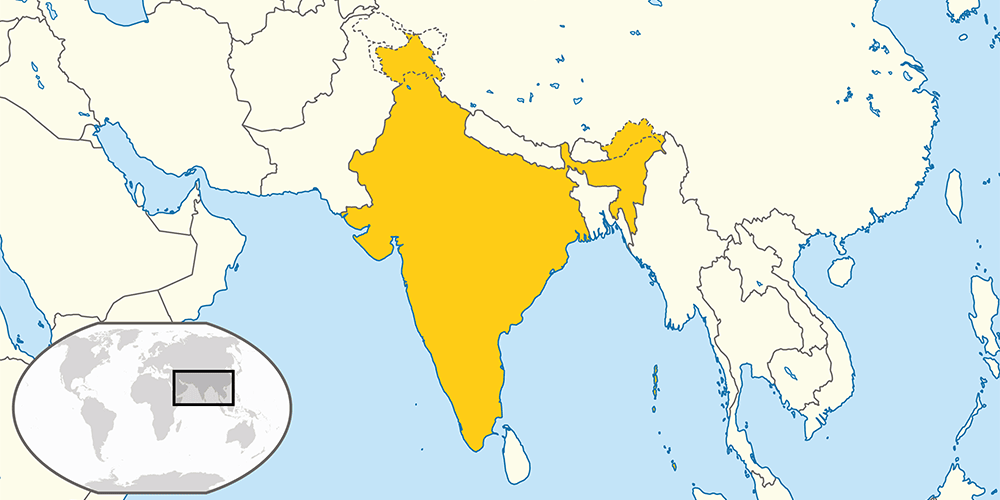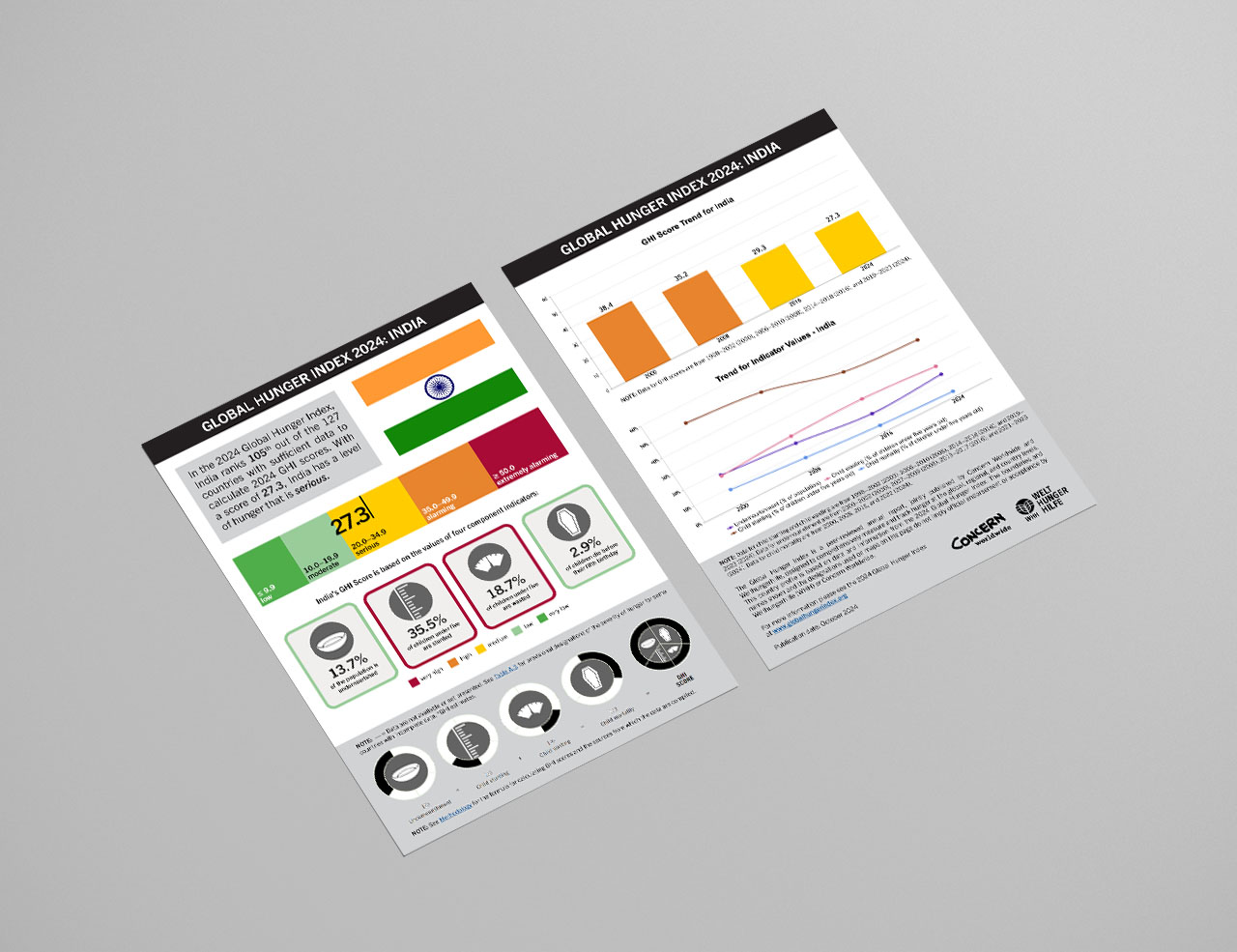low 10.0–19.9
moderate 20.0–34.9
serious 35.0–49.9
alarming ≥ 50.0
extremely alarming
India's GHI Score is based on the values of four component indicators:
Note: — = Data are not available or not presented. See Table A.3 for provisional designations of the severity of hunger for some countries with incomplete data. *GHI estimates. Some countries did not exist in their present borders in the given year or reference period.
- very high
- high
- medium
- low
- very low
Note: Data for GHI scores, child wasting, and child stunting are from 1998–2002 (2000), 2006–2010 (2008), 2014–2018 (2016), and 2019–2023 (2024). Data for undernourishment are from 2000–2002 (2000), 2007–2009 (2008), 2015–2017 (2016), and 2021–2023 (2024). Data for child mortality are from 2000, 2008, 2016, and 2022 (2024). See Methodology for the formula for calculating GHI scores and the sources from which the data are compiled. The boundaries and names shown and the designations used on maps on this page do not imply official endorsement or acceptance by Welthungerhilfe (WHH), Concern Worldwide or the Institute for International Law of Peace and Armed Conflict (IFHV).
Note: Afghanistan, Bangladesh, Bhutan, India, Maldives, Nepal, Pakistan, and Sri Lanka are in South Asia for the purposes of Figure 1.3, whereas the remaining countries are in East and Southeast Asia. Bhutan and Maldives are not shown, owing to insufficient data for the calculation of GHI scores. Existing data and provisional indicator values for these countries were included in the calculation of regional and global GHI scores. See Table A.3 regarding provisional designations of hunger severity for countries with incomplete data.


